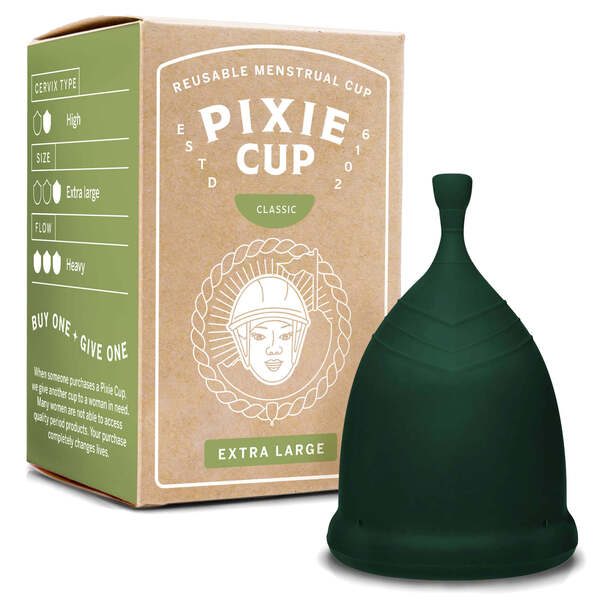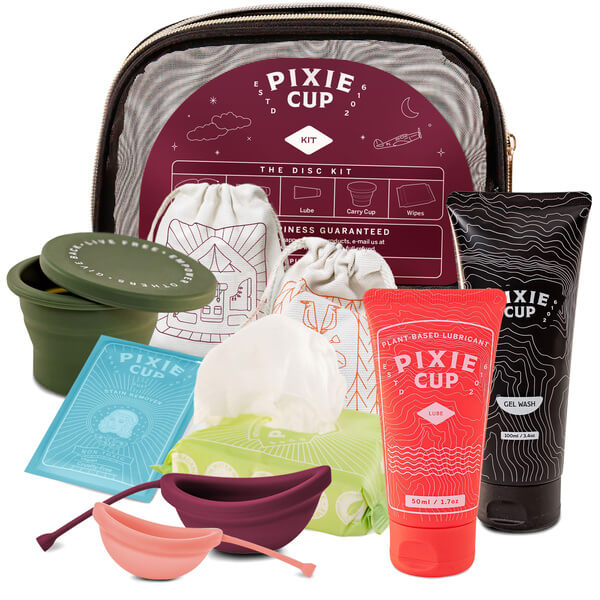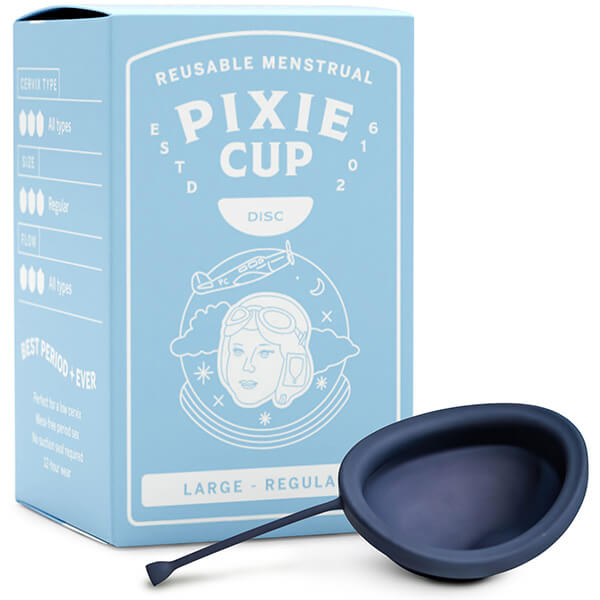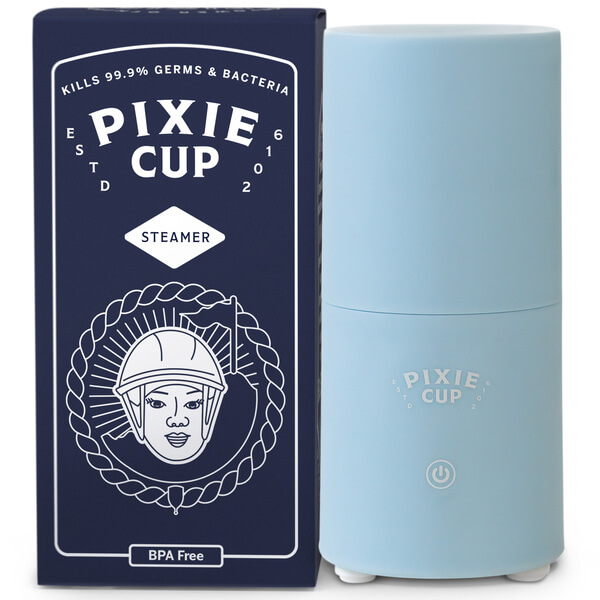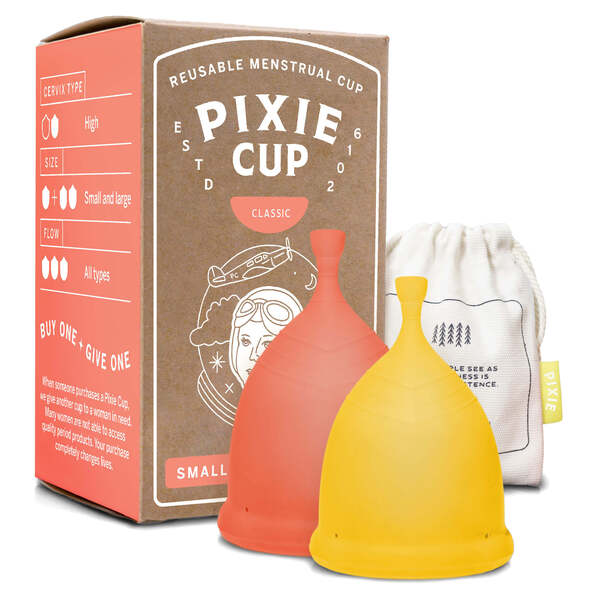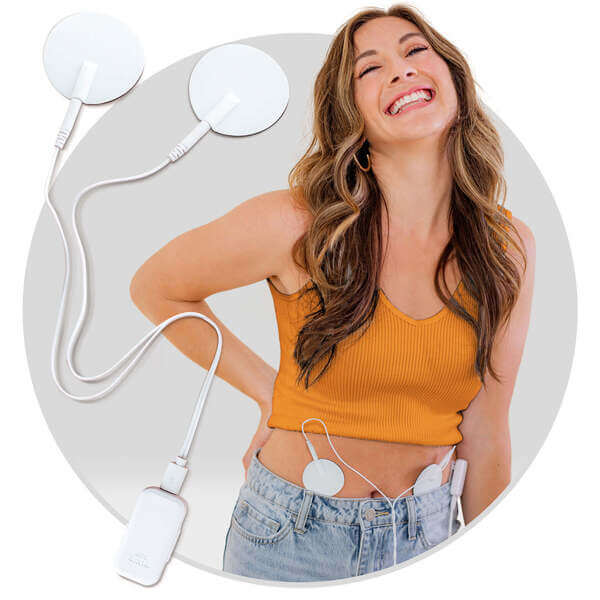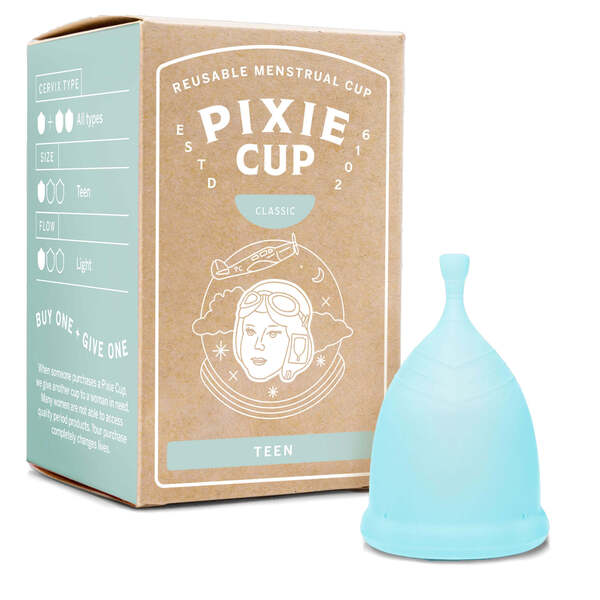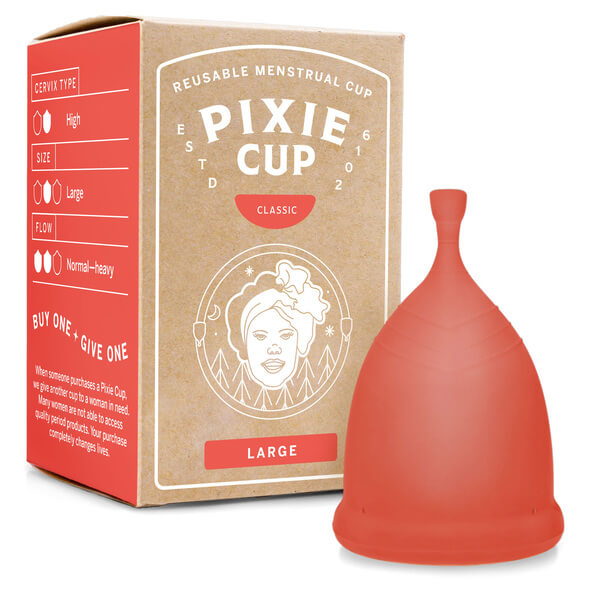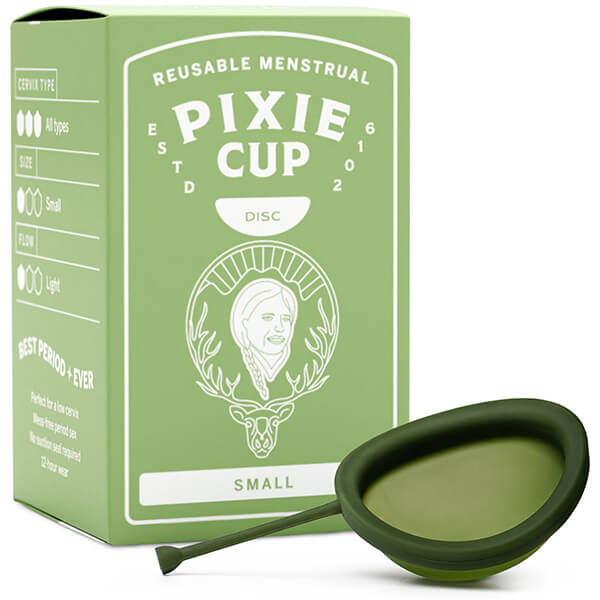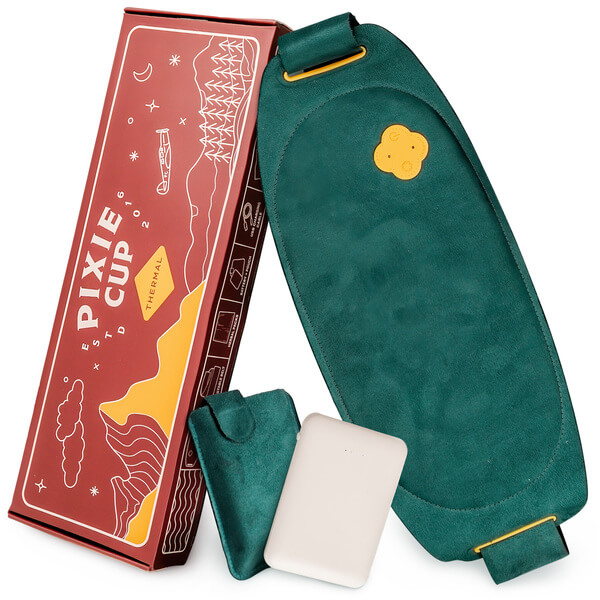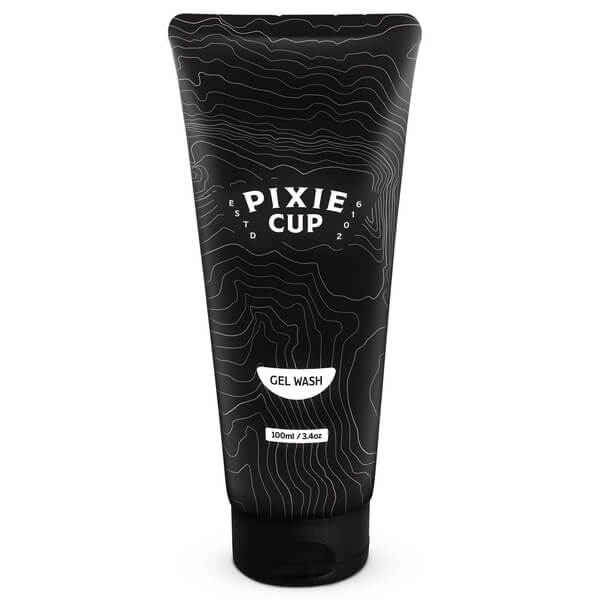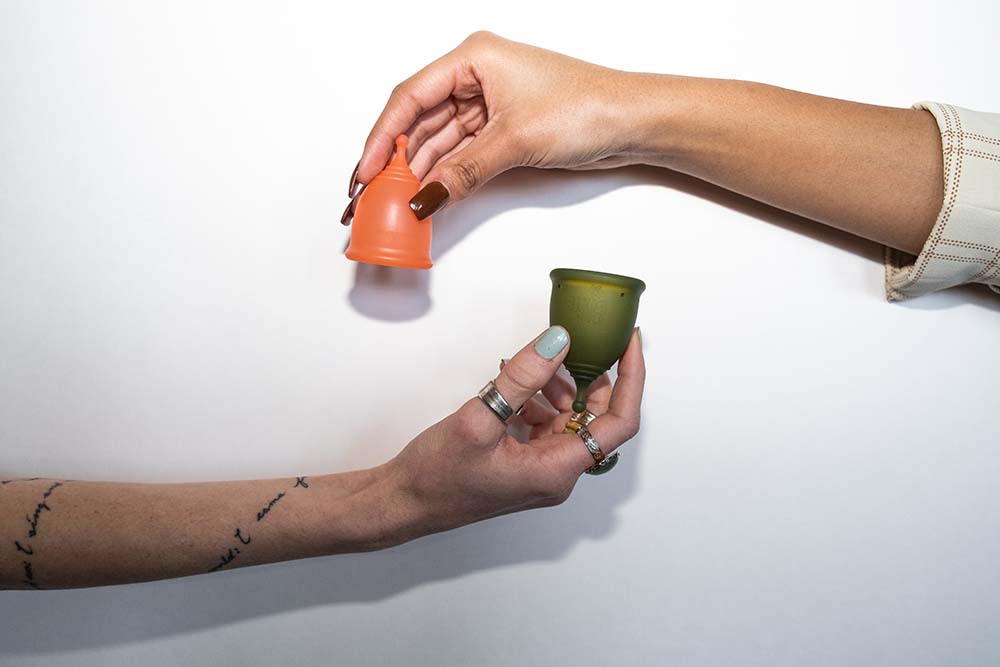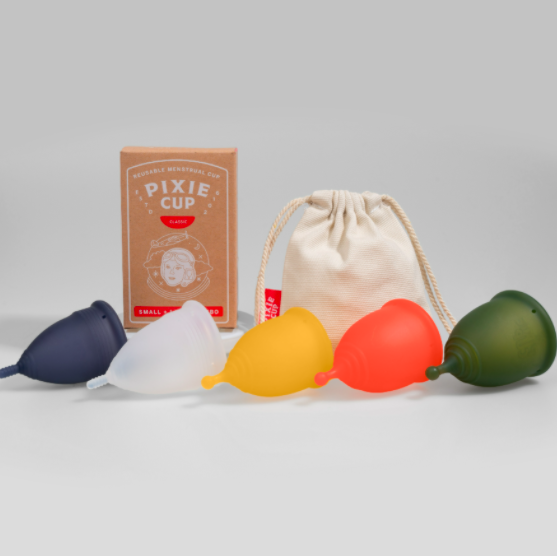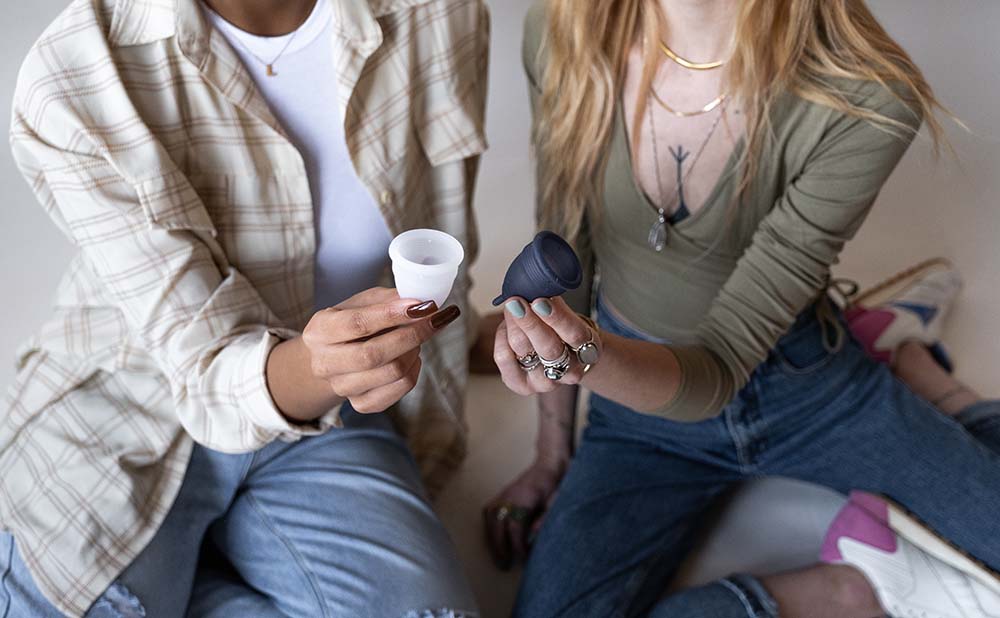Menstrual cramps can be an unwelcome monthly visitor for many. While there are amazing devices to ease cramp discomfort, menstrual cups have gained popularity for their potential to provide relief from cramps. However, not all cups are created equal, and some may even exacerbate the pain. In this blog post, we will explore why menstrual cups can relieve cramps and why certain cups may cause cramps.
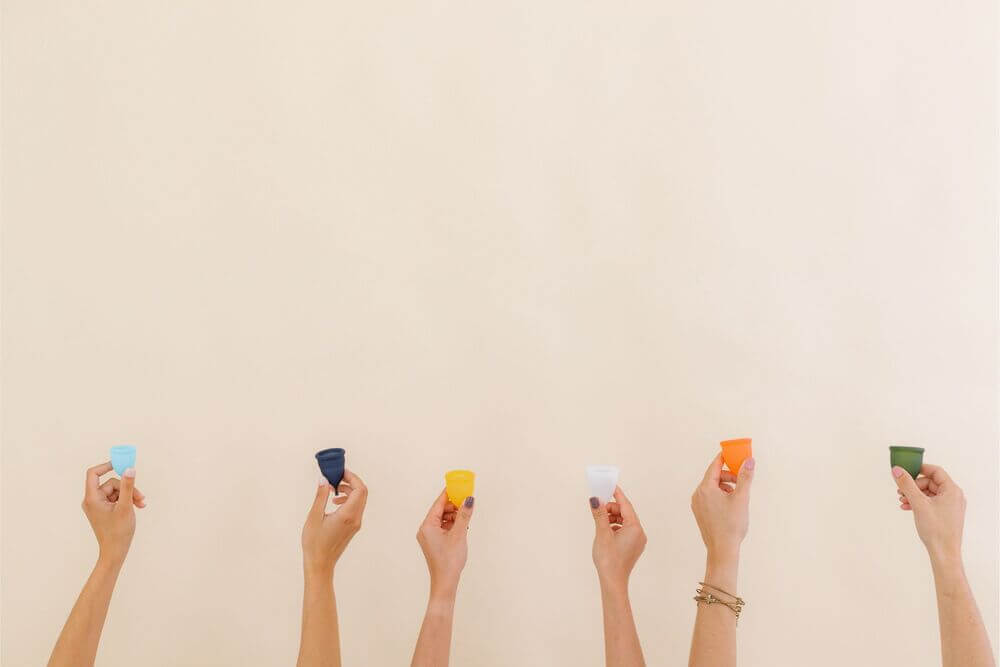
The Role of Menstrual Cups in Relieving Cramps
Menstrual cups are gaining recognition as a sustainable and convenient alternative to traditional menstrual products. They are typically made of medical-grade silicone or latex and are designed to be inserted into the vagina to collect menstrual fluid. While their primary purpose is to provide eco-friendly and cost-effective menstrual care, many cup users have reported a reduction in menstrual cramps.
The relief experienced by individuals using menstrual cups for cramp management can be attributed to several factors. First, cups collect the flow rather than absorb it, which allows for a more natural and gentle menstrual process. This helps maintain the uterine muscles’ relaxation and minimizes the constriction that can lead to cramping.
Additionally, the seal created by the cup helps maintain a consistent and steady flow, preventing the backflow of blood and clots that can cause discomfort. By keeping the menstrual fluid contained within the cup, cups also reduce the exposure of the uterine lining to air, which can help alleviate cramps. This is why many cup users have said that when they switched from tampons to cups, their cramps reduced significantly!
Cups Causing Cramps: Understanding the Factors
While menstrual cups generally provide relief from cramps, some users may experience increased discomfort due to cups. It is essential to identify and address these factors to ensure a positive cup experience.
1. Cervical Sensitivity
When it comes to menstrual pain, the elasticity of the cervix plays a big role. The cervix, located at the lower end of the uterus, has a crucial function during menstruation. It becomes more elastic to relax and open slightly, allowing menstrual blood to flow out of the uterus and through the vagina. However, this elasticity can also make the cervix more sensitive. This sensitivity can vary from person to person and even from cycle to cycle. When tampons, menstrual cups, or other objects come into contact with the cervix, it can sometimes cause cramps or discomfort. This is because the cervix might be more sensitive during this time, and any contact or pressure can trigger a response in the nearby nerves and muscles. It’s important to know your cervical height and to purchase a cup that is made for a high or low cervix.
2. Cup Material and Firmness
The material and firmness of the cup can significantly impact cramp severity. Cups made of stiffer materials may exert additional pressure on the vaginal walls, leading to increased cramping. Similarly, cups with a less flexible rim or body can cause discomfort during insertion and removal.
Pixie Cup’s Soft Cups are made with a softer silicone and have a smaller diameter than our Classic Cups, making them ideal for more petite or sensitive anatomies.

3. Poor Cup Fit and Positioning
A poorly fitting or improperly positioned cup can result in increased cramps. Cups that are too small or too large may not create the necessary seal, leading to leakage and heightened cramping. To find the right cup, the first factor to consider is cervix height. If the cup is pushing on or suctioning to your cervix, you will experience cramps. Download our Cervical Ruler for free to discover your cervix height. Inadequate positioning, such as placing the cup too low or at the wrong angle, can also cause discomfort.
Not sure which cup size is right for you, check out our Menstrual Cup Quiz to find the perfect cup for your anatomy, flow and lifestyle.
Positioning and Cramps: Achieving Optimal Placement
Correct positioning of the menstrual cup is crucial to both comfort and effective cramp relief. A cup that is sitting wonky can lead to increased pressure on the vaginal walls and potentially exacerbate cramping. However, with proper placement, users can maximize the benefits of their menstrual cup and minimize discomfort.
To ensure optimal positioning, it is essential to follow these guidelines:
- Relaxation: Before inserting the cup, it is crucial to be relaxed. Really, this makes a HUGE difference. Taking a few deep breaths and finding a comfortable position can help ease any tension or anxiety. Relaxing the pelvic muscles allows for easier cup insertion and ensures a more accurate placement.
- Insertion Angle: The angle at which the cup is inserted can affect its position inside the vagina. Fight the urge to push it straight up, and try your best to insert the cup at a slightly upward angle towards the base of the spine. This helps the cup find its natural position and creates a proper seal against the vaginal walls.
- Placement Depth: The menstrual cup should be inserted far enough to create a seal without being
uncomfortable. It is generally recommended to insert the cup low enough so that the stem or base of the cup sits just inside the vaginal canal. However, every individual’s anatomy is different, and finding the right depth may require some trial and error. Our Customer Service gals are available daily to answer any questions that you have, and TMI is always welcome! - Ensuring a Seal: Once the cup is inserted, check if it has created a proper seal against the vaginal walls. This can be done by gently rotating the cup or running a finger around the rim to confirm that it is fully open and positioned correctly. A good seal prevents leakage and helps relieve cramps by maintaining consistent pressure inside the cup.
- Adjusting and Re-Positioning: If the cup feels uncomfortable or causes cramping, it may require adjustment or repositioning. Experimenting with different angles or adjusting the cup’s depth can help find the most comfortable and effective position.
If you’re experiencing cup discomfort and have tried all of these techniques, it’s time to try a softer cup. Pixie’s Soft Cup is made with a softer and more flexible material which offers an advantage when it comes to positioning. The pliability of the Soft Cup makes it easier to fold and insert at the desired angle, reducing the likelihood of discomfort or increased cramping. Its flexibility also allows for better adjustment and positioning within the vaginal canal, ensuring a proper seal and optimal cramp relief. It’s the perfect solution for those who feel that their current cup is too big, bulky, or stiff.
And as always, we offer our 100% Happiness Guarantee. So, if you’ve experienced cramps with your current Pixie Cup, email our Customer Service gals who are committed to finding you the most comfortable cup for your anatomy!

